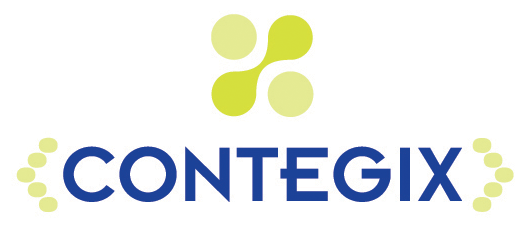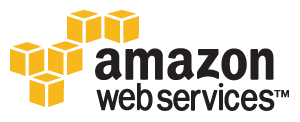Dispatches from the world of IT
News
Contegix Announces Cloud Competition
Contegix, a St. Louis-based managed hosting and Internet infrastructure company, is giving start-ups a chance to win some tools and office space doing what they should be doing anyway – putting together a solid business plan and making good use of cloud technology.
To win, a company has to be a start-up formed in 2010 or 2011, and the company must have a business plan or concept that makes use of "Internet infrastructure."
The judges for the contest will be evaluating companies on their competitive features, growth plans, sales strategy, choice of development platform, and "promise for commercial success or positive social change." Presumably, companies that are working on Fortran-based start-ups need not apply.
What's the lure? Contegix is going to be awarding an "Enterprise" package that includes more than US$ 75,000 in free office space and tech tools, an Atlassian Bitbucket account or JIRA Studio accounts, Zimbra-hosted email, and (equally important for a start-up) T-shirts and an espresso machine. This also includes office space in scenic St. Louis and free passes to the Strange Loop 2011 conference.
Who's judging, you may wonder? It's an eclectic group made up of Alex Williams, editor of ReadWriteWeb; Jennifer Ehlen, interim director of Saint Louis University Center for Entrepreneurship; and Jay DeLong, vice president of New Ventures and Capital Formation, Saint Louis Regional Chamber and Growth Association. The Contegix execs will also be in on the judging, and it could involve some of their strategic partners. Many will enter, but only one will win. The applications will be accepted through April 10, 2011. Look for more on the Contegix website http://www.contegix.com/.

Icinga v1.3.0 Released with Dual-Stack Support
By now, most administrators should be aware of the coming "IPocalypse," with the world running out of IPv4 addresses. If you are not already preparing for the coming of IPv6, it's time to start – and if you're going to be moving to IPv6, you need to make sure that your monitoring solution supports it as well! The latest Icinga release takes care of that nicely.
Icinga, a backward-compatible fork of Nagios, recently pushed out its 1.3.0 release with what it calls "dualstack" host monitoring, which offers support for IPv6 as well as IPv4. No doubt that feature is going to be crucial in the next few years.
In addition to dual-stack support, the 1.3 release brings new reporting features, improvements in database support, new notification settings, and a host of fixes for previous releases.
Why Icinga instead of Nagios? Icinga is a fully open source project that carries a number of features that aren't present in the open source release of Nagios. These features include support for distributed systems, virtual appliances, SLA reports, a web API for monitoring data, performance charts, and much more. Additionally, Icinga carries features that are absent from Nagios and Nagios XI – the proprietary release of Nagios. With Icinga, users get a mobile interface for iPhone and Android, support for PostgreSLQ and Oracle databases (in addition to MySQL), live search, and much more.
For the full scoop on Icinga, visit the company's website http://www.icinga.org/.

AWS CloudFormation and Static Website Support
Amazon Web Services (AWS) just keep getting better and better. In the past month, Amazon has announced several new features for small and large hosting needs.
On the small-site front, Amazon has added a couple of features that should make it possible (finally) to host static websites. In late February, Amazon announced support for custom error documents and root documents. Previously, you could host all the content you wanted on AWS, but when people visited the root of your site, they'd receive an Amazon S3 error. Now, however, you can specify a static document and direct visitors there. And, you can create custom error documents, so if users hit a page that should deliver a 404, that's what they get.
On the biggie-sized side, Amazon launched CloudFormation in March http://aws.amazon.com/cloudformation/. This service allows developers and sys admins to create a template for a collection of AWS resources required to run an application. CloudFormation is a freebie on top of Amazon's services, and users only pay for AWS resources – not for the new feature. If you want to test it, Amazon has sample templates for Gollum, ReviewBoard, MovableType, Tracks, and WordPress, among others.
Amazon has also added a host of additional features for companies, like a connector for VMware vCenter, cluster instances for SUSE Linux Enterprise Server, and more. Because Amazon rolls out new features continuously, keeping up with new features requires constant vigilance, so be sure to check the Amazon AWS Newsletters every month http://aws.amazon.com/about-aws/newsletters/.

Oracle Pulls Support for Itanium
Not long after Intel started pushing its 64-bit Itanium line, some journalist wags dubbed it the "Itanic" because it failed to get the kind of market support Intel had hoped for – whereas AMD's 64-bit line of x86 chips caught on. Despite the mass appeal, Intel has pushed ahead with Itanium but has suffered the loss of support from Red Hat, Microsoft, and now Oracle.
On March 22, Oracle announced in a very terse statement that it would cease all software development for Itanium after "Intel management made it clear that their strategic focus is on their x86 microprocessor and that Itanium was nearing the end of its life." Oracle also cited HP in its decision to cease development – HP CEO Leo Apotheker had not mentioned Itanium in a recent talk about the strategic direction for HP, even though HP has about 90 percent of the Itanium market.
Intel announced an Itanium roadmap in February for its "Poulson" chipset, which did not mention an end of life for the chip. HP cried foul after the announcement, saying that Oracle is stranding a lot of customers who are already using Itanium in production. Oracle has committed to continue supporting the Itanium software it already has produced, so customers will not have to migrate to new hardware to continue support.
Given Oracle's support for the market-dominant x86-64 hardware, as well as its own SPARC line of hardware acquired from Sun, the company has little reason to support the niche platform owned by a competitor. So, it looks like the writing is on the wall for the Itanic after all.
Intel Classmate Laptop Updated by Lenovo
Interesting news for school admins: Lenovo and Intel are working together to provide the Classmate+ PC, a ruggedized laptop to handle the most challenging environment in IT – schools.
The Classmate+ is an Atom-based 10.1-inch clamshell computer with Windows 7 and up to 250GB of storage – or schools can opt for a solid state drive (SSD) instead. Naturally, the Classmate will also have WiFi and Ethernet connectivity and will be easy for students to carry around with its built-in handle. It also will come with Intel's Learning Series software suite and additional specialized educational software and learning resources.
The Classmate+ is already slated to roll out in one major deployment: The first wave of 158,000 Lenovo Classmate+ laptops are being purchased by the Organization of Ibero-American States as part of the Conectar Igualdad 1:1 computing program.
So far, Intel has sold more than 3 million Classmate computers. The current generation is available to any education customers, although pricing had not been specified for the North American or European market at press time http://www.intellearningseries.com/.

